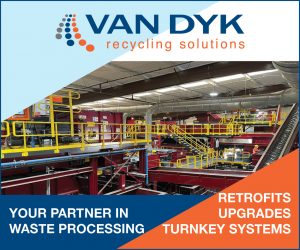
During a recent AMERIPEN webinar, industry insiders discussed the importance of policy for building end markets for recycled materials. | SunnyToys/Shutterstock
Without a market for a material, collection is not economically viable – but how can end markets be created unless there is stable supply? A webinar recently explored the role of legislation in solving that industry paradox.
The fifth webinar in AMERIPEN’s “Packaging EPR Has Arrived in the U.S. – Now What?” series brought several industry experts together on June 14 to talk about this apparent Catch-22.
The panelists shared their ideas for making extended producer responsibility (EPR) programs more focused on market development and suggested other steps that could be taken by both the industry and legislators to advance the sector.
Market development and EPR
Betsy Dorn, associate at consulting firm Circular Matters, said while most of the focus on EPR has been on collecting more material, she would argue that the most important role EPR plays for companies and producers is on the market development side.
“There’s no sense collecting any materials that don’t have a reliable market,” she said.
To structure an EPR program to focus on market development, Dorn suggested including all packaging on the list of covered materials, regardless of whether it’s currently recyclable, specifying recycling targets to be met by producers and the PRO, and having a clear on-ramp for adding material to the accepted material lists.
High fees for non-recyclable packaging should be added to support development of those markets, she added, along with a mandate that producer responsibility organizations (PROs) use responsible end markets.
“We’re going to need more markets – without question – for existing materials that have traditionally been recycled because we’re going to be collecting more of them, but also any covered material that is collected under the system that doesn’t have a market,” she said.
A regional market development approach is better than a state-by-state approach, Dorn added, as well as more local work on building circular markets and building diverse markets for stability.
“Market development doesn’t happen overnight,” she said. “it’s a process that takes time, and lawmakers and all stakeholders have to realize that.”
Matt Flechter, recycling market development specialist with the Michigan Department of Environment, Great Lakes and Energy (EGLE), agreed that he doesn’t hear much talk about how EPR can advance end markets.
He said much of the time, there are end markets in place for materials, but the volume is not great enough to give it stability. EPR could help with that, he added, but he worries about what the state-by-state EPR approach will do to the markets of neighboring states.
“I think we’re going to be in the first grouping of states that have EPR in place, but what does that mean for our neighbors?” he said.
Jason Pelz, vice president of recycling projects for the Carton Council, noted that markets have always been key in what the Carton Council has been trying to push forward.
“If you don’t have that one piece now or in the future, there’s going to be a challenge,” he said, which is why his organization decided to start with a focus on developing markets.
“When we looked at end markets we also looked from an innovation standpoint,” he said, going past the traditional paper manufacturers and working with companies interested in creating building products from residuals.
He highlighted a project in Michigan that removed excess moisture from fiber residue, noting that “we did not just focus on what was obvious.”
The role of other legislation
While EPR has been getting a lot of attention, Dorn said there are plenty of other policy levers that can be pulled. Disposal bans and deposit return systems are both complementary to EPR.
‘We need to start looking at other policy tools that do exist,” she added.
Flechter added that a stronger focus on circular materials would also help.
“Design better products that create that pathway back to that end market,” he said. “It creates market demand.”
He added that while theoretical planning and policy have their place, “let’s get down into the actual work of building markets” by designing projects and doing experimentation.
“The real work is done in the MRF and on the curb,” he said. “I see this as an opportunity to grow markets, but it’s ultimately going to need additional either legislative or other support that’s going to make market development work.”
Pelz added that knowledge-sharing and maintaining brand engagement will also help make a difference.
“There is not one silver bullet or one single solution,” he said. “It’s ‘end markets,’ not ‘end market.’ More solutions is better than one.”



